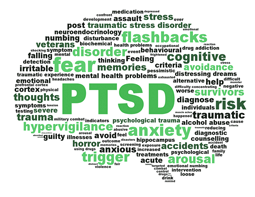 W
WMemory is commonly referred to as the ability to encode, store, retain and subsequently recall information and past experiences in the human brain. This process involves many proteins, one of which is the Histone-binding protein RbAp48, encoded by the RBBP4 gene in humans.
 W
WDissociative identity disorder (DID), previously known as multiple personality disorder (MPD), is a mental disorder characterized by the maintenance of at least two distinct and relatively enduring personality states. The disorder is accompanied by memory gaps beyond what would be explained by ordinary forgetfulness. The personality states alternately show in a person's behavior; however, presentations of the disorder vary. Other conditions that often occur in people with DID include post-traumatic stress disorder, personality disorders, depression, substance use disorders, conversion disorder, somatic symptom disorder, eating disorders, obsessive–compulsive disorder, and sleep disorders. Self-harm, non-epileptic seizures, flashbacks with amnesia for content of flashbacks, anxiety disorders, and suicidality are also common.
 W
WDual representation theory (DRT) is a psychological theory of post-traumatic stress disorder (PTSD) developed by Charles Brewin, Tim Dalgleish, and Stephen Joseph in 1996. This theory proposes that certain symptoms of PTSD - such as nightmares, flashbacks, and emotional disturbance - may be attributed to memory processes that occur after exposure to a traumatic event. DRT proposes the existence of two separate memory systems that run in parallel during memory formation: the verbally accessible memory system (VAM) and situationally accessible memory system (SAM). The VAM system contains information that was consciously processed and thus can be voluntarily recalled or described. In contrast, the SAM system contains unconsciously processed sensory information that cannot be voluntarily recalled. This theory suggests that the VAM system is impaired during a traumatic event because conscious attention is narrowly drawn to threat-related information. Therefore, memory of the trauma is heavily focused on fear, which affects information processing. This gives rise to PTSD symptoms such as trauma-related cognitions, appraisals, and emotions. The SAM system captures vivid sensory information during the traumatic event, which is automatically recalled through exposure to trauma-related triggers. This system is thought to be responsible for the presence of flashbacks and nightmares in PTSD symptomatology.
 W
WDissociative fugue, formerly fugue state or psychogenic fugue, is a dissociative disorder and a rare psychiatric disorder characterized by reversible amnesia for personal identity, including the memories, personality, and other identifying characteristics of individuality. The state can last days, months or longer. Dissociative fugue usually involves unplanned travel or wandering and is sometimes accompanied by the establishment of a new identity. It is a facet of dissociative amnesia, according to the fifth edition of the Diagnostic and Statistical Manual of Mental Disorders (DSM-5).
 W
WKorsakoff syndrome (KS) is an amnestic disorder caused by thiamine (vitamin B1) deficiency typically associated with prolonged use of alcohol. The syndrome and psychosis are named after Sergei Korsakoff, the Russian neuropsychiatrist who discovered it during the late 19th century.
 W
WProsopamnesia is a selective neurological impairment in the ability to learn new faces. There is a special neural circuit for the processing of faces as opposed to other non-face objects. Prosopamnesia is a deficit in the part of this circuit responsible for encoding perceptions as memories.
 W
WTwilight sleep is an amnesic condition characterized by insensitivity to pain without loss of consciousness, induced by an injection of morphine and scopolamine, especially to relieve the pain of childbirth.
 W
WWernicke–Korsakoff syndrome (WKS) is the combined presence of Wernicke encephalopathy (WE) and alcoholic Korsakoff syndrome. Due to the close relationship between these two disorders, people with either are usually diagnosed with WKS as a single syndrome. It mainly causes vision changes, ataxia and impaired memory.